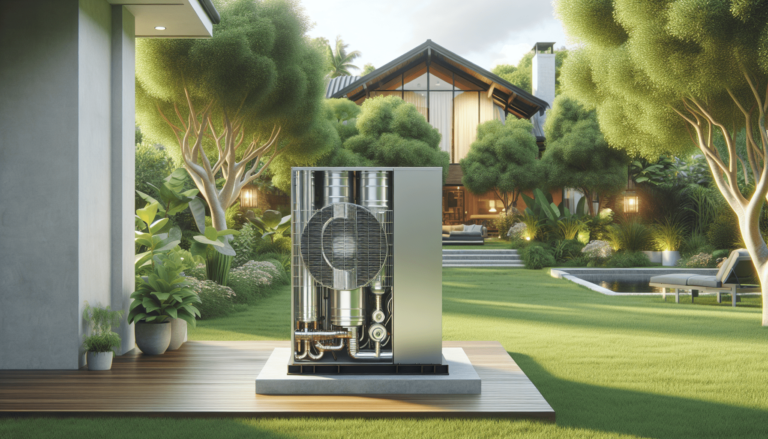

HVAC Services
Get Professional Repairs From The Area's Trusted HVAC Technicians. Ask About Our Services! We Offer Professional Heating & Cooling System Repairs And Guarantee Long-Lasting Results.
Got Question? Call us: (850) 678-2665Financing
Deciphering Error Codes On Modern HVAC Systems
Decode those baffling HVAC error codes like a pro! Our guide turns cryptic codes into simple solutions, saving your comfort and wallet this season.

Have you ever found yourself in a chilly room during winter or a sweltering one in midsummer, all because your trusty HVAC system decided to take a sudden break? If so, you are certainly not alone. Navigating the world of modern HVAC systems can be a bit of an enigma, especially when it starts throwing error codes at you out of the blue. What do they mean? How urgent is it to address them? Let’s take a friendly and in-depth journey into the labyrinth of these codes together, and hopefully, by the end, you’ll feel equipped to decipher them like a pro.

Understanding HVAC Error Codes
HVAC systems, with their complex mix of electronics and mechanics, are designed to make our living environments comfortable. When something goes wrong, these systems don’t cry out with smoke signals or flashing neon lights but instead communicate through error codes. These codes, appearing on the system’s display, are a language of their own, created to provide clues on what might be the problem.
What Are HVAC Error Codes?
Error codes are essentially diagnostic messages. Think of them as the HVAC system’s way of throwing up a red flag, signaling that something isn’t quite right. These codes can indicate anything from minor glitches to significant mechanical failures. Each HVAC manufacturer uses a unique set of codes to describe different issues, so getting a hold of the system’s manual or searching the model number online can be extremely helpful.
Why You Should Pay Attention to Error Codes
Ignoring error codes in an effort to ‘let it ride out’ can lead to system inefficiency, increased energy bills, or, worse yet, irreparable damage. Addressing these codes promptly can extend the lifespan of your system and maintain the comfort level of your environment. Being proactive is not only economically wise but also ensures that you aren’t left sweating or shivering for longer than necessary.
Common HVAC Error Codes and Their Meanings
Let’s break down some of the common error codes that you might encounter with various HVAC systems. Keep in mind that codes may vary depending on the brand and type of system you have.
Error Code: E1
Explanation: Typically, an E1 error code signals an issue with the air filter. This is one of the most common and straightforward problems to address.
What to Do: Check the air filter for dust or debris. If necessary, clean or replace the filter. Keeping a regular schedule for filter maintenance can prevent this issue from reoccurring.
Error Code: E2
Explanation: An E2 error might indicate a problem with the system’s sensor. Sensors are vital for regulating temperature and ensuring your system runs efficiently.
What to Do: Inspect the sensors for any disconnection or dirt. If a sensor looks damaged, it might need replacement. Consult the user manual or a professional for guidance.
Error Code: F0
Explanation: This code often appears when there’s a refrigerant issue, such as low levels or leaks.
What to Do: Call a professional technician. Handling refrigerants incorrectly can be hazardous, so it’s best left to certified individuals.
Error Code: H3
Explanation: This error signifies a high compressor discharge temperature, commonly caused by clogged airways or insufficient refrigerant.
What to Do: Ensure that the outdoor unit is free from airflow obstructions. Check that it’s not running too hot in direct sunlight without any shade to cool it down.
Error Code: P1
Explanation: Often related to a problem with the voltage. Your system may not be receiving the correct power supply to function optimally.
What to Do: Check your electrical connections and the circuit breaker. If the problem persists, contact a professional electrician to safely investigate further.
Error Code: U4
Explanation: Communication error between the indoor and outdoor units. This can happen if wires are loose or damaged.
What to Do: Inspect the wiring. Tightening loose connections might resolve the issue, but if wires are damaged, professional repair is recommended.
Steps to Take Before Calling a Professional
Before reaching for the phone and dialing in a technician, there are several steps you can take to potentially resolve issue errors and save a few dollars.
Double-check Your System Manual
Every HVAC system comes with a manual (often available online if you’ve misplaced yours) that details specific error codes for that model. Reference the manual for exact meaning and troubleshooting tips.
Restart the System
Sometimes, simply turning your system off and back on again can reset the error code. It’s the old “did you try turning it off and on?” trick that surprisingly works more often than not with electronic systems.
Ensure All Vents Are Open
Blocking or closing off air vents to save energy can backfire by causing pressure build-ups and triggering error codes. Make sure all vents are unobstructed.
Check the Thermostat
The thermostat could be functioning incorrectly, leading to system errors. Check its power source, settings, and ensure it’s not exposed to heat from direct sunlight or appliances.
Replace Batteries
If your thermostat is battery-operated, a low battery might cause false error codes to be displayed.
When to Call a Professional
There’s only so much a user can do before it becomes time to call in an expert. Here are situations where it’s wise to step back and let the pros handle it:
Codes Indicating Electrical Issues
Electricity can be dangerous, and HVAC systems operate with high voltages. If codes point to wiring or voltage issues, professional intervention is necessary.
Problems with Refrigerants
Handling refrigerants involves specific tools and knowledge. Only certified professionals should manage refrigerant issues due to health and environmental hazards.
Persistent or Multiple Error Codes
If errors continue after performing all recommended troubleshooting steps, or if multiple error codes appear, this might signal complex system problems that require expert attention.

Tips for Preventing Future Errors
Prevention is always better than cure, meaning regular maintenance and mindful usage can keep error codes at bay more effectively than any quick fix.
Regular Maintenance
Schedule annual professional check-ups to ensure your HVAC system runs efficiently. These check-ups can identify potential issues before they trigger error codes.
Change Filters Regularly
Set reminders to change or clean filters every 1-3 months depending on your system’s requirements and environmental factors. This simple task can prevent many common issues.
Monitor Energy Usage
Spikes in energy usage can be an early indicator of system malfunctions. Keeping an eye on your energy bill can help catch problems before they become severe.
Keep Areas Around Units Clear
Ensure there’s ample clearance around both indoor and outdoor units. This allows for proper airflow and prevents overheating or pressure build-ups.
Conclusion
Deciphering error codes on modern HVAC systems doesn’t have to be a daunting task. By understanding what these codes signify and taking appropriate action, you can save yourself time, money, and the discomfort of a home that’s too hot or too cold. Remember, routine checks and timely maintenance can prevent many issues, and when in doubt, consult your system’s manual or call in a professional. Next time your HVAC system starts flashing an error code, you’ll know how to respond with confidence.
For those in Niceville, FL, or nearby areas, Tempacure Heating and Air Conditioning can be a reliable partner in all your HVAC needs. Their team is just a phone call away at (850) 678-2665 or online at TempacureHVAC.com. With expert help readily available, you can ensure that your HVAC system remains in tip-top shape and that any pesky error codes are swiftly and effectively handled.






